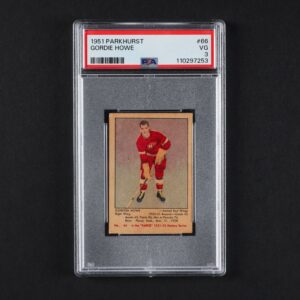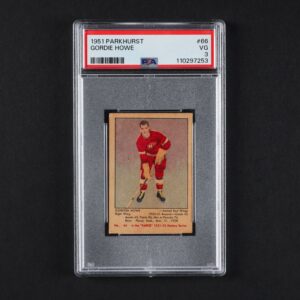The world of basketball card collecting has been embroiled in a heated debate over which card represents Michael Jordan’s true rookie card. The contenders in this debate are the 1984-85 Star #101 and the 1986-87 Fleer #57. This argument delves beyond the mere determination of a rookie card; it delves into the evolution of the trading card industry, authenticity concerns, and the changing standards of grading companies.
The Star #101 card was released in 1984, the same year that Jordan made his NBA debut with the Chicago Bulls. It was part of a limited distribution, mainly through team sets, and was not available in traditional packs like most trading cards at the time. The limited distribution plays a crucial role in this card’s story and classification.
On the other hand, the Fleer #57 card was released in 1986 and is often seen as the official rookie card of Michael Jordan. The Fleer set was widely distributed and available in pack form, aligning with the traditional model of card distribution.
One factor that complicates the debate is the XRC (extended rookie card) designation given to the Star #101 card. This classification stems from its limited distribution and the fact that Star Company cards were not widely available in retail stores. XRCs are typically cards that precede a player’s first widely-released card, which in Jordan’s case, is the Fleer #57.
Professional Sports Authenticator (PSA), a leading grading company, initially hesitated to grade Star cards, including the 1984-85 Star #101 Jordan card, due to the high number of counterfeits and authentication challenges. However, in recent years, PSA has started grading these cards, acknowledging their significance in the sports card market and developing improved authentication techniques.
The argument for the Star #101 card being Jordan’s true rookie card leans on its historical significance. It was the first card to feature Jordan as an NBA player and was produced closer to his actual rookie year. On the other hand, the Fleer #57 card aligns with the traditional definition of a rookie card — widely distributed and available in packs to the general public.
Market perception is another significant factor in this debate. The Fleer #57 card is more widely recognized and sought after by collectors, often commanding higher prices in the market. This recognition is partly due to Fleer’s status in the industry and the wider availability of the card.
The debate between the Star #101 and Fleer #57 cards not only impacts collectors and investors but also raises authenticity and grading challenges. The Star #101 card, in particular, faced issues with counterfeits flooding the market, making authentication crucial and difficult. PSA’s decision to grade these cards has brought a new level of legitimacy, but it has also sparked debates regarding grading standards and identifying authentic cards.
The distribution method of the Star #101 card further adds to the discussion. Some argue that its distribution through team sets, rather than traditional packs, diminishes its claim as a “true” rookie card compared to the Fleer #57, which adheres to the standard trading card distribution.
This debate also sheds light on the evolution of the sports card market and the changing perceptions of what constitutes a rookie card. The Star #101 card represents a time in the industry when distribution and marketing strategies differed significantly from the era of the Fleer #57 release. As the market evolves, so do the definitions and perceptions within it.
Ultimately, the question of which card is Michael Jordan’s true rookie card may come down to personal preference and interpretation. The Star #101 card offers historical significance and a direct connection to Jordan’s rookie season, while the Fleer #57 card provides a more traditional and widely accepted rookie card experience. Both cards hold immense value as iconic representations of one of basketball’s greatest players and serve as a testament to the dynamic nature of sports memorabilia collecting.
As the debate continues and PSA grades more Star cards, the market may see shifts in the value and perception of these cards. Collectors and investors must stay informed and adaptable as the landscape of sports card collecting continues to evolve. Regardless of which side of the debate one falls on, both the 1984-85 Star #101 and the 1986-87 Fleer #57 Michael Jordan cards remain invaluable pieces of basketball history and cherished items in the world of sports memorabilia.






